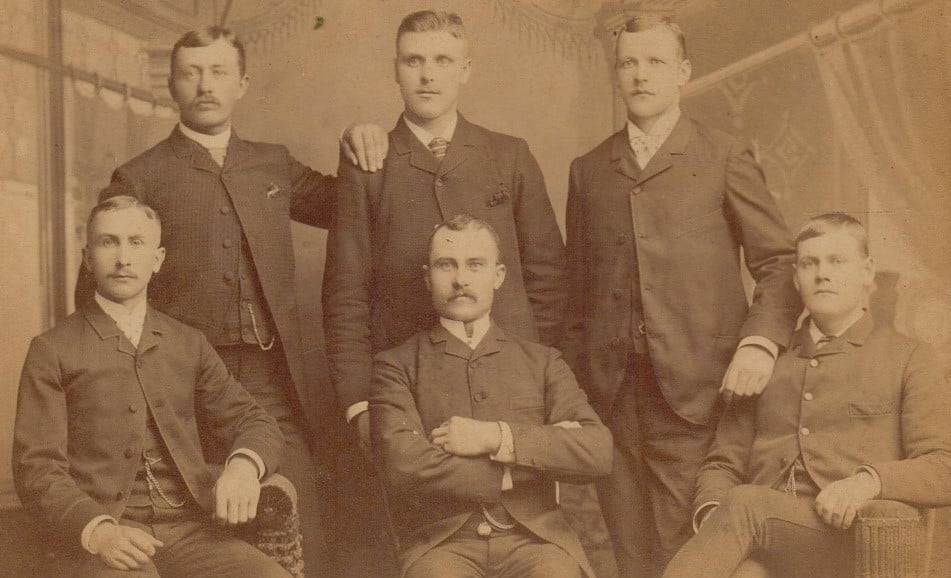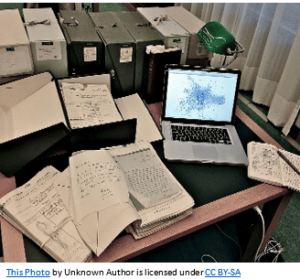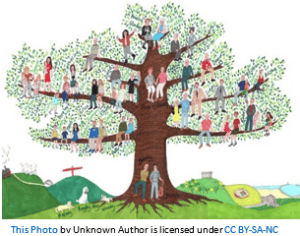“I Don’t Do Genealogy Because…”
 4
4Nov

Are you “doing” your own genealogy? If not, you probably have a reason! Many people believe their family history is already complete, due to the hard work of previous generations. Others may be discouraged due to a lack of resources, or inexperience. If any of the following explanations sound familiar to you, we invite you to take a closer look at how genealogy research has changed over the past few years. You may be pleasantly surprised to see how easy it can be to jump back into family history!
“My family history is done”
 This reason is often used when someone knows their Grandma Nellie or Great-Aunt Edith did quite a bit of family history research back in the mid-1900s. Our grandparents did a wonderful job gathering the information available to them at the time, but technology, digitization, and the internet have been game-changers for personal research. Locating records today is a much easier process, and there may be sources available now that were simply not accessible a couple of generations ago.
This reason is often used when someone knows their Grandma Nellie or Great-Aunt Edith did quite a bit of family history research back in the mid-1900s. Our grandparents did a wonderful job gathering the information available to them at the time, but technology, digitization, and the internet have been game-changers for personal research. Locating records today is a much easier process, and there may be sources available now that were simply not accessible a couple of generations ago.
Research standards have improved as well. Perhaps the registers of your ancestor’s parish were not available for searching a few generations ago, but your great-grandmother found a possible ancestor’s baptism in the filmed register of a neighboring parish. In the past, these “close assumptions” were often accepted as fact. Today, many more records have been digitized and are available for searching. With a few mouse clicks, a more thorough search could produce a better match for your ancestor.
“My genealogy goes clear back to Adam”
 While it’s exciting to think a family line extends as far back in human history as possible, these claims deserve some scrutiny. There has never been any pedigree reaching back to Adam that has been proven to be correct.[1] A common theory was if you could connect to a royal lineage, a combination of historical and Biblical records could be used to build a pedigree extending back to Adam. The ancient royal genealogists had a vested interest in making sure their ruler’s noble lineage was pure, with no evidence of scandal, and may have enhanced their findings to seem more favorable. Additionally, few physical records survived the ravages of time in the Middle and Dark Ages. It simply isn’t possible to produce proof of a marriage or birth for every generation. Although difficult to accept as fact, these ancient lineages can certainly inspire a conversation about one’s more recent heritage, and might just ignite a spark of interest in a future genealogy enthusiast!
While it’s exciting to think a family line extends as far back in human history as possible, these claims deserve some scrutiny. There has never been any pedigree reaching back to Adam that has been proven to be correct.[1] A common theory was if you could connect to a royal lineage, a combination of historical and Biblical records could be used to build a pedigree extending back to Adam. The ancient royal genealogists had a vested interest in making sure their ruler’s noble lineage was pure, with no evidence of scandal, and may have enhanced their findings to seem more favorable. Additionally, few physical records survived the ravages of time in the Middle and Dark Ages. It simply isn’t possible to produce proof of a marriage or birth for every generation. Although difficult to accept as fact, these ancient lineages can certainly inspire a conversation about one’s more recent heritage, and might just ignite a spark of interest in a future genealogy enthusiast!
“There’s nothing left to find”
This is common, especially in families where robust family history research has been conducted for generations. There may be one elusive ancestor even the most dedicated descendant can’t find, because there are no new sources to examine and no new clues for further research. These ancestors are referred to as “dead-ends” because the trail of information stops with them. Sometimes, moving forward in time a generation or two and verifying existing evidence will uncover problems with the data. In one case, the earliest research showed an ancestor, Jane Brown, was the daughter of Mich. [Michael] Brown, and for decades, Jane Brown’s descendants searched in vain for any evidence of Michael Brown. However, a closer look at Jane’s baptism record showed her father’s name was actually Nich. [Nicholas] Brown, whose marriage and baptism were right there in the church register.
A word of advice—once you find the parents of that elusive dead-end ancestor, don’t relax for too long, because now you have two dead-ends!
Genealogy research conducted in the mid-1900s rarely included sources for the data. You can do your extended family a great service by examining the family-supplied data you have, and then finding sources to back up the research. One woman, whose ancestry on all of her great-grandparents’ lines extended back for several generations, decided to prove the information on one ancestral line by finding sources for every baptism, marriage, and burial. She immediately found an error in the data which had resulted in the wrong family being linked to her family tree, and has been busy ever since, correcting the records and finding new information.
“I don’t even know where to start”
 The obvious answer is, start with yourself! Locate your own birth certificate or marriage record, and then move to your parents’ records. County courthouses have records for births, marriages, and deaths. Newspapers, photos, or journal entries can provide other interesting clues for searching. Ancestry and FamilySearch have online trees posted by users, with varying degrees of accuracy. These can be helpful starting points for research, but be wary about accepting every detail as fact. Quite often these trees have been passed down for decades, perpetuating errors that have gone undetected.
The obvious answer is, start with yourself! Locate your own birth certificate or marriage record, and then move to your parents’ records. County courthouses have records for births, marriages, and deaths. Newspapers, photos, or journal entries can provide other interesting clues for searching. Ancestry and FamilySearch have online trees posted by users, with varying degrees of accuracy. These can be helpful starting points for research, but be wary about accepting every detail as fact. Quite often these trees have been passed down for decades, perpetuating errors that have gone undetected.
New research techniques in DNA genealogy are becoming more available and more mainstream, but those who use them should be aware that the results can be very surprising, and are not always welcome.[2] Adoptions may have been secretly arranged, or an indiscretion may have produced a child who has a different father than his siblings. These are reasons to proceed with caution and tact if DNA testing gives you an unexpected result.
“I think I need an expert”
Many people who don’t have the time, experience, or interest in genealogical research are turning to professionals to expand their ancestral lines and fill in gaps in their family history. At Price Genealogy, our researchers practice the highest standards of research, with experts for every geographical area of the world. We can investigate a specific research question, or add new data to your family tree. Let us know how we can help you accomplish your genealogy goals!
Patti
[1]“Can I Trace Genealogy Back to Adam and Eve?” article, FamilySearch Wiki (http://www.familysearch.org : accessed 24 Oct 2022), rev. 29 May 2020, at 16:25.
[2] “Unexpected DNA Matches,” article, Ancestry (https://support.ancestry.com/s/article/Unexpected-DNA-Matches : accessed 24 Oct 2022).
